We stayed one night at Arromanches and and that has been described earlier. Arromanches was in the British zone of the invasion, called Gold Beach. To the east of Gold were Juno, with British and Canadian troops, and Sword, with British and French forces. To the west of Gold were Omaha Beach and Utah Beach, both with American forces.
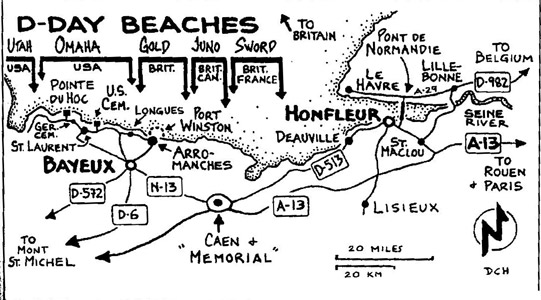
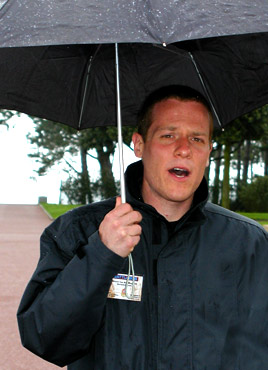
We met our guide, Geert, in Arromanches and he narrated many of the events of D-Day on June 6, 1944. He was an excellent storyteller and WWII historian. We first rode the bus to Omaha Beach where he described the events there.
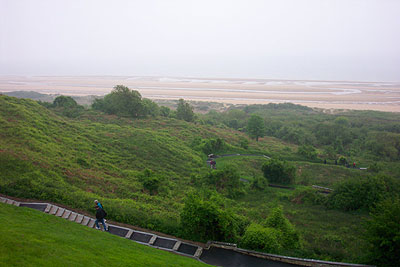
It was impressive as we stood at the top of the draw where the Americans attacked. Many members of the tour walked down the path that marked the path one of the soldiers had traversed on D-Day. In the 6 mile length of Omaha Beach, the Americans landed 34,000 troops that first day and suffered 2,400 casualties. Further information, diagrams and pictures of Omaha Beach can be found at this website.
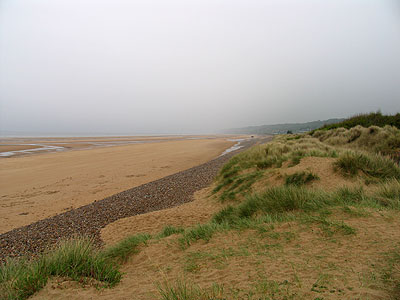
Partway down the path you can see the shingle(pebble) bank of small stones which provided some slight protection against the German guns firing from above.
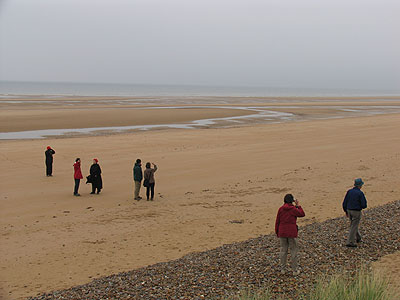
Judy and Chuck are on the shingle bank while others from the group are on the beach.

This is a view of the shingle bank from the beach.
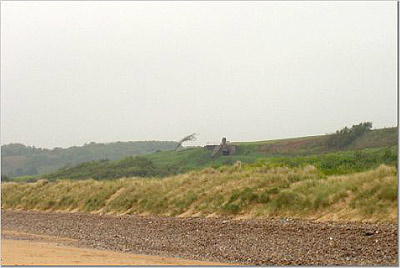
This shows the shingle bank and a German bunker near the top of the bluff.
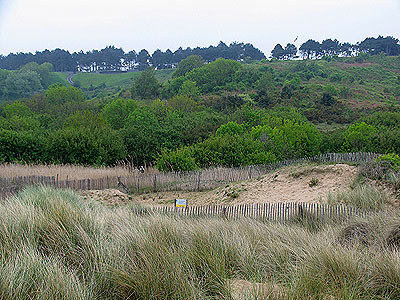
This is a view from the beach looking up at the bluff which faced the American army at the invasion.
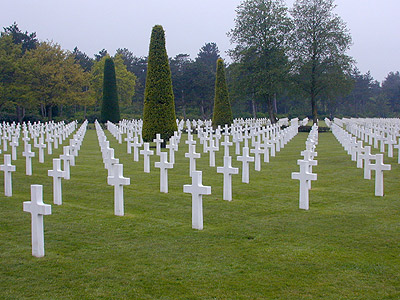
There are 9,387 Americans buried at the American cemetery at this location.

This is a memorial named "The Spirit of American Youth Rising from the Waves."
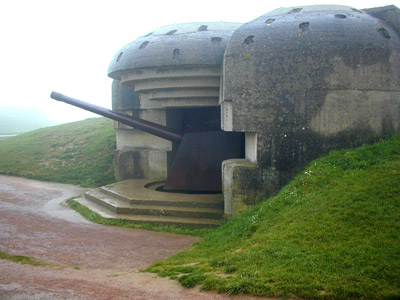
In Longues-sur-Mer there remains one of the German guns which defended the coast.
Continue to Dinan in Brittany.